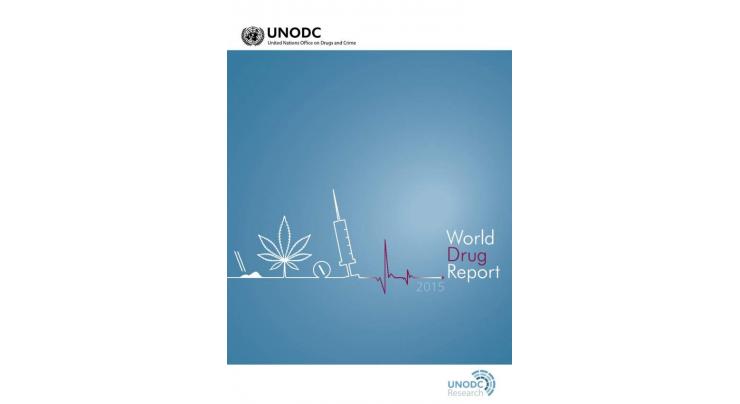
Drug-Report-UNODC--2---ISLAMABA
Fakhir Rizvi Published July 20, 2016 | 06:31 PM

(UrduPoint / Pakistan Point News - 20th july, 2016) The World Drug Report-2016 also included new findings related to people who inject drugs (PWID) such as link between use of stimulants (among them new psychoactive substances which are not under international control) and engaging in risky injecting which can result in a higher risk of HIV infection, is looked at. Additional findings point to high levels of drug use in prison, including use of opiates and injecting drug use.
Prisons, therefore, remain a high-risk environment for infectious diseases, and the prevalence of HIV, hepatitis and tuberculosis among persons held in prison can be substantially higher than among general population. Gender disparities can be attributed to opportunity of drug use in a social environment, rather than gender being a factor determining drug use. Within the family context, female partners and children of drug users are also more likely to be victims of drug-related violence. With 2016 marking the first year of adoption of new Sustainable Development Goals (SDGs), the report provided a special focus on world drug problem within this context.
In analyzing these linkages the SDGs have been divided in five broad areas - social development, economic development, environmental sustainability, peaceful, just and inclusive societies and partnerships.
The report highlighted a strong link between poverty and several aspects of drug problem.
Indeed, the brunt of drug use problem is borne by people who are poor in relation to societies in which they live, as can be seen in stark terms in wealthier countries. The strong association between social and economic disadvantage and drug use disorders can be seen when analyzing different aspects of marginalization and social exclusion, such as unemployment and low levels of education. The report also shed some light on varied ways in which the world drug problem results in different manifestations of violence. While the intensity of drug-related violence is greatest when associated with drug trafficking and production, these do not necessarily produce violence, as illustrated by the low levels of homicide in transit countries affected by opiate trafficking routes in Asia.
The excessive use of imprisonment for drug-related offenses of a minor nature is ineffective in reducing recidivism and overburdens criminal justice systems, preventing them from efficiently coping with more serious crimes.
Provision of evidence-based treatment and care services to drug-using offenders, as an alternative to incarceration, has been shown to substantially increase recovery and reduce recidivism.
Related Topics
Recent Stories

SC orders end of encroachments in Karachi

Nazish Jahangir denies viral screenshots, calls them fake

Govt likely to hike electricity price once again

Bismah Maroof announces immediate retirement from international cricket

Malala expresses unwavering support for Gaza people

Selection committee dissolved over Pakistan women cricket team's poor performanc ..

Punjab CM Maryam Nawaz in police uniform at Chung police center

Currency Rate In Pakistan - Dollar, Euro, Pound, Riyal Rates On 25 April 2024

Today Gold Rate in Pakistan 25 April 2024

Mired in crisis, Boeing reports another loss

Session Awarding Ceremony 2024 held at Cadet College Muzaffarabad

Austrian ski great Hirscher to make comeback under Dutch flag
More Stories From Pakistan
-

SC orders end of encroachments in Karachi
9 minutes ago -
CM Bugti reviews establishment of National Driving Licence Centre
20 minutes ago -
Youth engagement, use of digital media amid fostering exchanges with countries on environment crucia ..
20 minutes ago -
Section 144 imposed in Mardan for polio campaign safety
20 minutes ago -
Struggle for Dera’s development to continue: MNA
30 minutes ago -
Eight drug peddlers, bootleggers, illegal weapon holders netted
40 minutes ago
-
South Waziristan Upper police arrest two accused with solar plate
40 minutes ago -
South Waziristan police arrest two accused with solar plate
40 minutes ago -
NHMP prioritizes safety of commuters & patrolling officers: SP NH&MP
40 minutes ago -
Federal Ombudsman regional office disposes of 10,386 complaints last year: Badshah Gul Wazir
40 minutes ago -
1000 E-Bikes to be given to students in five cities including Rawalpindi: Provincial Minister
50 minutes ago -
Police arrest two bike lifters with five motorcycles
50 minutes ago
